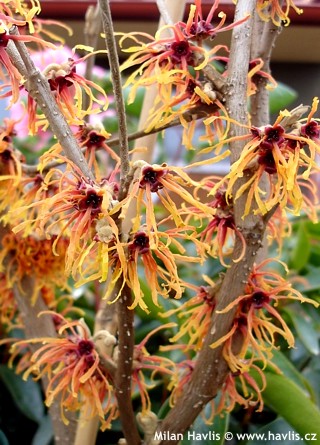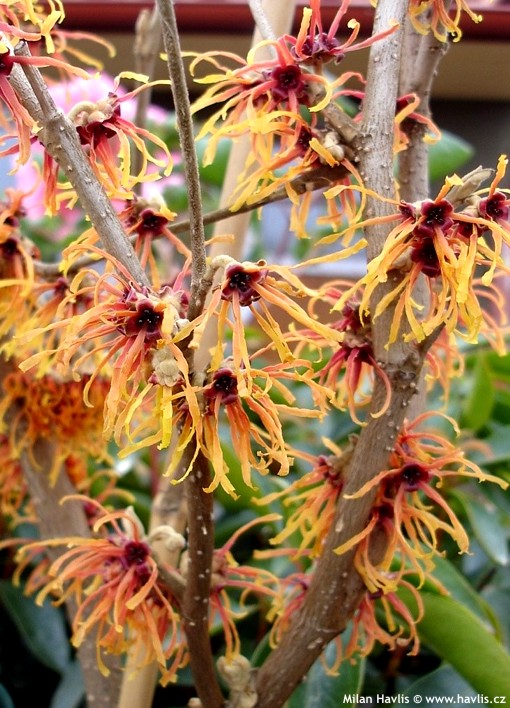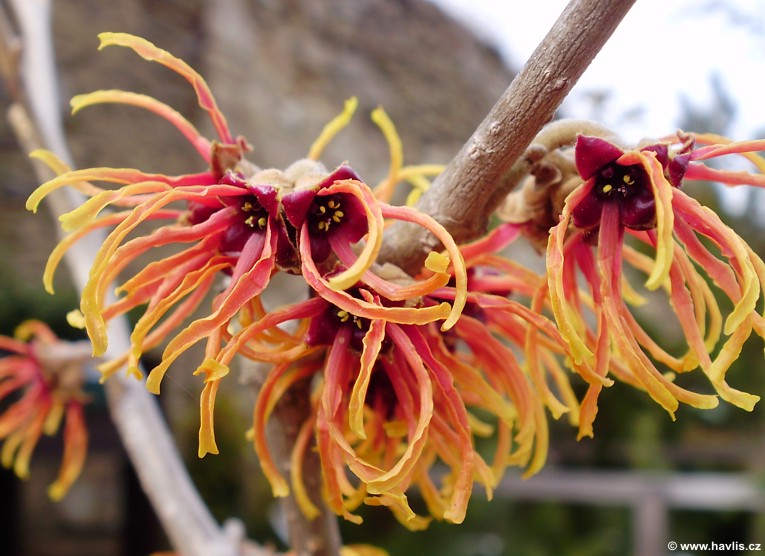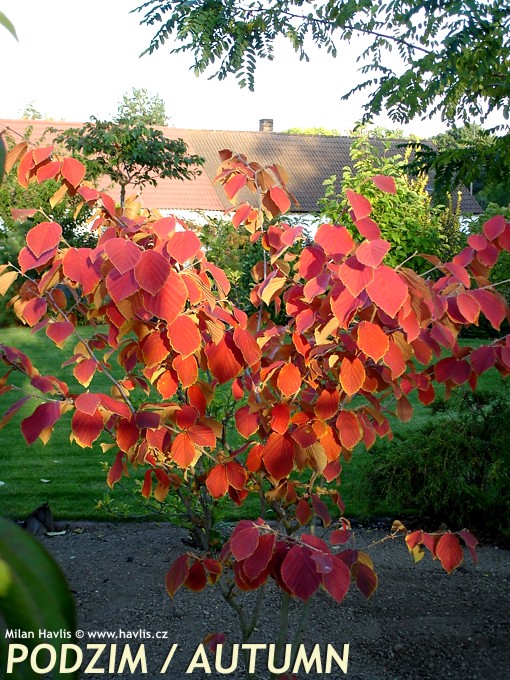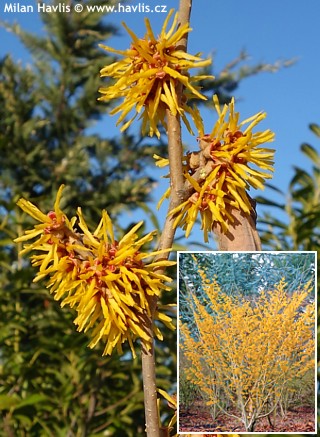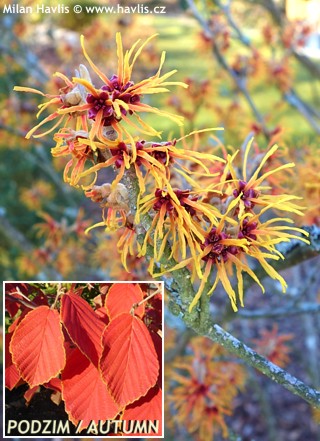Hamamelis x intermedia 'APHRODITE' witch hazel
Witch hazels are unique shrubs that offer profuse flowering at times when everything else in the garden looks dull and far from cheerful. This variety was named after a Greek goddess of love and beauty Aphrodite (the Romans called her Venus, by the way). In many pictures she was shown with undulate (or curly) red hair and this with hazel looks just the same – its fringe-like flowers are a mixture of amber-golden and copper-red and release a lovely perfume on a sunny day. They like cold weather and may start flowering as early as February (in zone 6) and continue until the first very hot days of spring (April).
Leaves are similar to hazel, but larger and turn rich coral or scarlet red with a yellow margin in autumn. Witch hazel is a beautiful shrub or a small tree of an open vase shape, and thanks to its maximum size of about 3m it is ideal for even a small garden.
Witch hazel hybrids are of garden-origin. They are a cross between Asian species h.japonica and h.mollis. Grow them in acid to neutral, moist but well drained soil. They don’t tolerate lime or hard pruning when older. Sunny location or light semi-shade is best. Fully hardy to about -29°C (USDA zone 5) but exposed sites are not recommended.
Last update 01-04-2013

































